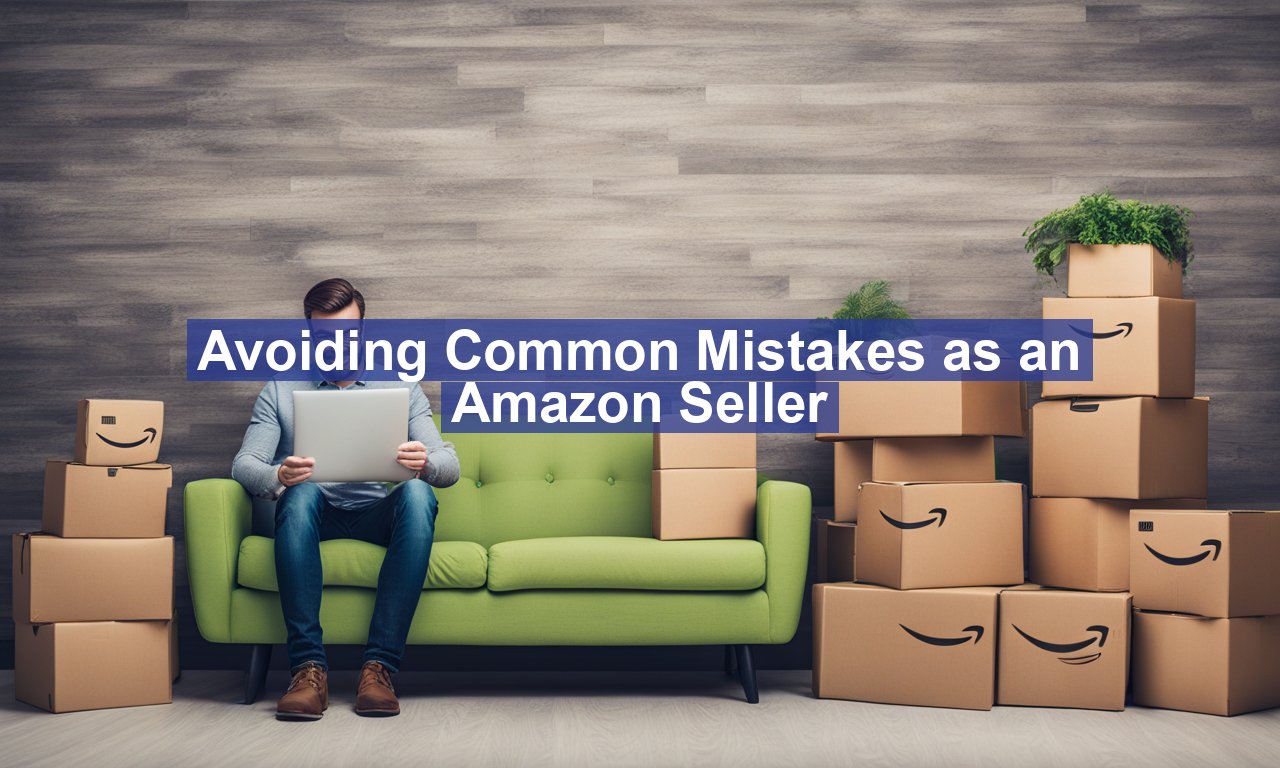Avoiding common mistakes as an Amazon seller, imagine investing your time and resources into becoming an Amazon seller, only to find that your efforts fall flat. Maximizing your success on Amazon requires not just ambition and a great product, but also knowing the common pitfalls and how to avoid them. This comprehensive guide dives into those common mistakes, offering you a roadmap to navigate the world of Amazon selling with ease and efficiency.
Avoiding Common Mistakes as an Amazon Seller: Step-by-Step Guide
1. Neglecting Product Research
Lack of thorough product research can hurt your Amazon selling journey before it even begins. It is essential to know what products are in demand and the level of competition for those items.
Solution: Take advantage of tools like Jungle Scout and Helium 10, which provide critical insights into product trends, competition, and market demand. Consistent research will help you avoid investing in products with low demand or overly saturated markets.
2. Ignoring Proper Keyword Optimization
Amazon operates largely as a search engine for products. Ignoring the importance of keyword optimization can lead you to become invisible on the platform.
Solution: Conduct keyword research using tools like Amazon’s own search field, where you can see autocomplete suggestions, or third-party tools like Ahrefs’ Amazon Keyword Tool. Focus on long-tail keywords to catch more specific & high-intent searches.
3. Poor Product Listings
Your product listing is your storefront, & a poor listing can turn potential buyers away. Common mistakes include low-quality images, lackluster product descriptions, and neglecting bullet points.
Solution: Ensure that your listings are attractive and informative:
- Use high-quality, high-resolution images that feature the product from many angles.
- Create compelling, keyword-rich product titles and descriptions.
- Highlight key features and benefits using bullet points.
For more on effective product listings, check out this comprehensive guide.
4. Underestimating the Importance of Reviews
Customer reviews play a pivotal role in building trust and encouraging sales on Amazon. A lack of reviews, or worse, many negative reviews, can significantly impact your product’s performance.
Solution: Proactively manage your reviews by providing exceptional customer service, and politely asking satisfied customers to leave reviews. Utilize Amazon’s “Request a Review” button to cheer feedback.
5. Mismanaging Inventory
Running out of stock can cripple your Amazon rankings, while overstocking can tie up capital unnecessarily. Balancing inventory is a crucial characteristic of your business.
Solution: Use inventory management tools to track sales trends and reorder at the right time. Programs like Amazon’s Inventory Performance Index can provide valuable metrics to help you optimize your stock levels.
6. Overlooking Amazon’s Policies
Failing to comply with Amazon’s recommendation can guide to penalties or even account suspension. Staying knowledgeable about Amazon’s ever-evolving policies is critical.
Solution: Regularly review Amazon’s seller policies and updates. Participate in the Seller Forums or read up on regulatory changes on Amazon’s policy page to ensure compliance.
7. Skimping on Customer Service
Excellent customer service is key to maintaining a good seller rating & engendering customer loyalty. Ignoring customer inquiries or failing to resolve issues can damage your reputation.
Solution: Respond to customer queries and complaints promptly. Consider investing in customer service automation tools to streamline communication & ensure customer satisfaction.
8. Failing to Analyze and Adjust Your Strategy
Selling on Amazon is not a set-it-and-forget-it business. Continuous analysis and adjustments based on performance data are necessary for sustained success.
Solution: Regularly review your sales metrics, customer feedback, and market trends. Tools like Amazon’s Seller Central and third-party analytics platforms can provide invaluable insights.
9. Ignoring Advertising Opportunities
Many sellers underestimate the power of Amazon’s ad options. Without promotions, you might struggle to stand out in a crowded marketplace.
Solution: Utilize Amazon Sponsored Products, Sponsored Brands, and other advertising tools to increase your product’s visibility. Set aside a budget for advertising and regularly monitor and optimize your campaigns based on performance.
10. Overreliance on a Single Sales Channel
While (AMZ) can be a fantastic sales channel, putting all your eggs in one basket can be risky. Changes in Amazon’s algorithms or policies can severely impact your business.
Solution: Diversify your sales channels by also selling through your own website or other marketplaces like eBay or Walmart. This strategy not only mitigates risk but also reaches different customer bases.
Conclusion
Avoiding common mistakes as an Amazon seller, avoiding these common mistakes can save you time, money, and frustration on your Amazon selling journey. By conducting thorough research, optimizing your listings, managing your inventory wisely, complying with Amazon’s policies, providing excellent customer service, continuously analyzing your performance, utilizing advertising opportunities, and diversifying your sales channel, you can significantly increase your chance of success.
For more detailed insights, you might want to explore this Entrepreneur article on effective Amazon selling strategies. Remember, becoming a successful Amazon (AMZ) seller is a marathon, not a sprint. With consistent effort and smart strategies, you can build a thriving business on the world’s largest online marketplace.


